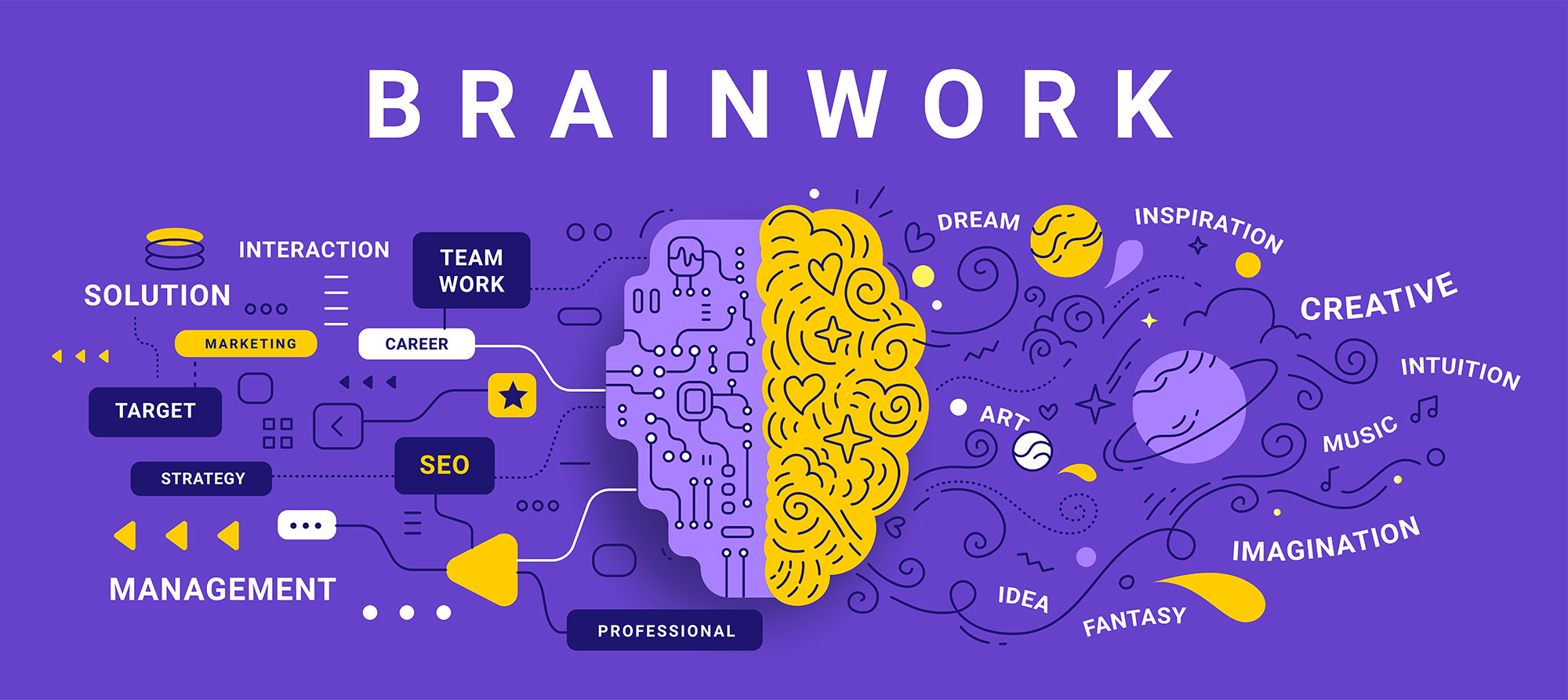
When you think of a visual designer, you might picture someone with an innate artistic flair. While creativity is undoubtedly a cornerstone of their craft, it’s only half the story. The truth is, visual designers are constantly engaging in a complex dance between artistic intuition and rigorous problem-solving, utilizing different facets of their brains to bring digital products to life.
The Left Brain: Problem-Solving
Before a single pixel is placed, a visual designer’s brain is already hard at work in its more analytical mode. This is where the left hemisphere, often associated with logic, analysis, and order, truly shines.
- Understanding the Problem: Every digital product is designed to solve a problem for its users. The designer must first deeply understand this problem. This involves analyzing user research, delving into business goals, and dissecting competitor products. It’s a process of sifting through data, identifying pain points, and defining the core challenge.
- Information Hierarchy: Think of a website or app – it’s a vast amount of information presented in a structured way. Designers use their analytical skills to organize content logically, establish clear hierarchies, and ensure effortless navigation. This is similar to building a mental blueprint, ensuring every piece of information has its rightful place and flows intuitively.
- User Flow Mapping: Before the “what it looks like” comes the “how it works.” Designers mentally (and often physically) map out user journeys, anticipating every click, swipe, and interaction. They’re asking: “If a user wants to achieve X, what’s the most efficient and enjoyable path for them?” This requires foresight, critical thinking, and an almost scientific approach to user behavior.
- Constraint Management: Every project comes with constraints – technical limitations, brand guidelines, budget, timelines. The left brain is crucial for navigating these boundaries, finding innovative solutions within predefined parameters, and ensuring the final product is feasible and sustainable.
The Right Brain: Creativity
Once the logical groundwork is laid, the right hemisphere, the seat of creativity, intuition, and holistic thinking, comes to the forefront. This is where the magic of visual translation truly begins.
- Brainstorming: With a clear understanding of the problem, the right brain ignites. This is where designers generate a multitude of ideas, exploring different visuals, color palettes, typography options, and layout possibilities. It’s a non-linear process, often involving “aha!” moments born from unexpected connections.
- Visual Storytelling: A digital product isn’t just functional; it also needs to communicate its purpose and brand identity visually. The right brain excels at crafting compelling visual narratives, using elements like imagery, iconography, and animation to evoke emotions and build connections with users.
- Intuitive Aesthetics: While there are principles of good design, a significant part of visual appeal comes from a designer’s innate sense of balance, harmony, and rhythm. This intuitive understanding allows them to make choices that just “feel right,” transcending purely logical considerations.
- Problem-Solving Through Visuals: Sometimes, the most elegant solution to a user experience problem isn’t found in a logical flowchart, but in a brilliant visual metaphor or an unexpected interaction design. The right brain allows designers to think outside the box and solve problems with visual ingenuity.
A Constant Dialogue
It’s crucial to understand that these brain functions aren’t isolated. They are in a constant, dynamic dialogue. A designer might use their left brain to identify a specific usability issue, then shift to their right brain to brainstorm creative visual solutions. They then toggle back to their left brain to evaluate the feasibility and impact of those solutions.
For example, when designing a navigation menu:
- Left Brain: Analyzes user data to understand common navigation patterns and identifies potential areas of confusion. Determines the optimal number of menu items based on information hierarchy.
- Right Brain: Explores different visual styles for the menu, considering iconography, typography, and animation to create an engaging and branded experience.
- Left Brain: Evaluates the chosen visual style for readability, accessibility, and responsiveness across different devices.
- Right Brain: Refines the details, ensuring visual harmony and an intuitive user experience.
In essence, visual designers are cognitive athletes, constantly flexing both sides of their brain. They are not just artists, nor are they just strategists. They are a unique blend of both, leveraging their full cognitive arsenal to create digital products that are not only beautiful but also intuitive, effective, and truly solve problems for the people who use them. So, the next time you admire a well-designed app or website, remember the incredible brain power working behind the scenes, bridging the gap between logic and imagination to create a seamless digital experience.
